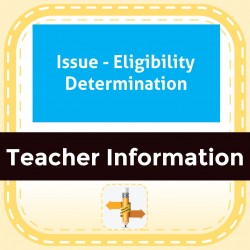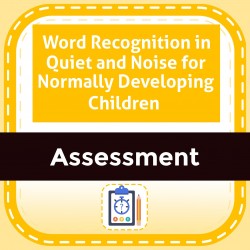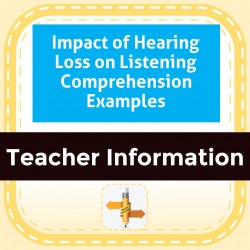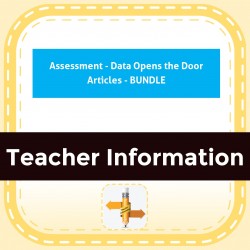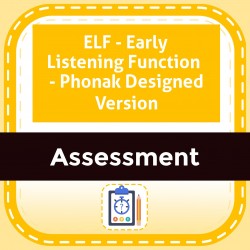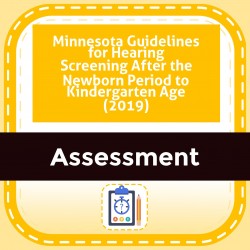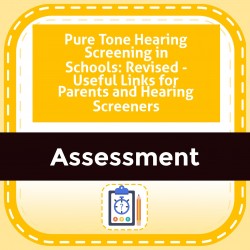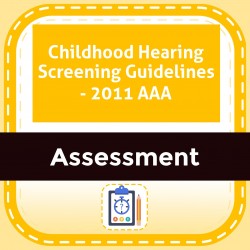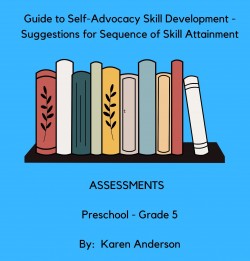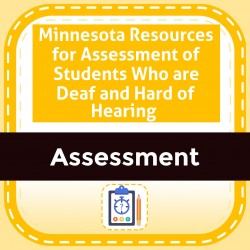Ability Levels
Categories
Resource Types
Age/Grade Range
CCSS
Anchor Standard
Speaking & Listening
Language
Reading
Issue - Eligibility Determination
$ 0
The information below has been derived from sections of the law and Office of Special Education Program comments. The guidance provided helPS- clarify the intent of IDEA and may be useful to professio
...
nals and parents alike who are trying to advocate appropriate services and supports for children with hearing loss.
Word Recognition in Quiet and Noise for Normally Developing Children
$ 0
Research results identifying the typical word recognition results for children with normal hearing ages 3-17 years. Results for single-word stimuli in quiet at 50dB and 35 dB, and in noise at 50 dB an
...
d 35 dB. Typical scores are 90%+ in noise and 95%+ in quiet.
Impact of Hearing Loss on Listening Comprehension Examples
$ 0
Teacher inservice handout to use to help make sense of Functional Listening Evaluation (FLE) results. Represents instructions in written form overlaid on puzzle pieces. DHH specialist would black out
...
word endings and phonemes to respresent reduction in speECH- perception based on percent response on FLE.
Assessment - Data Opens the Door Articles - BUNDLE
$ 6
These 9 articles discuss how assessment data opens doors for individualizing instruction. Topics addressed include IDEA regulations, eligibility concerns, working with the IEP team, impact of a hearin
...
g difference on working memory, language processing, and auditory skills. Articles are research-based.
ELF - Early Listening Function - Phonak Designed Version
$ 0
Discovery tool for families to raise awareness of the impact of their child's hearing loss and size of their 'listening bubble' in quiet and noise, with and without amplification. Scorable for pre/pos
...
t-test use by DHH professionals. Version designed by Phonak.
Minnesota Guidelines for Hearing Screening After the Newborn Period to Kindergarten Age (2019)
$ 0
Minnesota guide to hearing screening for children after newborn age until five years old - including pass/refer criteria, frequency of screening, ideal setting for screening, necessary training, docum
...
entation for hearing screening, and monitoring program quality.
Pure Tone Hearing Screening in Schools: Revised - Useful Links for Parents and Hearing Screeners
$ 0
Links provided for parents about hearing screening and hearing loss. Links provided for hearing screeners about hearing screening procedures. Links to videos describing pure tone hearing screening in
...
the schools and common mistakes.
Childhood Hearing Screening Guidelines - 2011 AAA
$ 0
Hearing screening guidelines were compiled in 2011 for the American Academy of Audiology. Guidelines are for students in preschool and K-2,3-5,6-8,9-12 and include specific recommendations for use of
...
puretone, otoacoustic emissions, and tympanometry screening plus recommendations for follow up.
Guide to Self-Advocacy Skill Development - Suggestions for Sequence of Skill Attainment
$ 0
Age-anchored list of expected self-advocacy skills by grade. Starts with preschool with full attainment of self-advocacy skills by the end of grade 4.
Minnesota Resources for Assessment of Students Who are Deaf and Hard of Hearing
$ 0
Extensive assessment resource developed by DHH professionals in Minnesota. Overview of assessment, formal vs. informal, intellectual, social emotional, language, reading, early childhood, transition,
...
appendices. Revised in 2008.
 Your browser is out of date. For best experience switch to latest updated Browser.
Your browser is out of date. For best experience switch to latest updated Browser.
 Get Chrome
Get Chrome Get Edge
Get Edge Get Firefox
Get Firefox